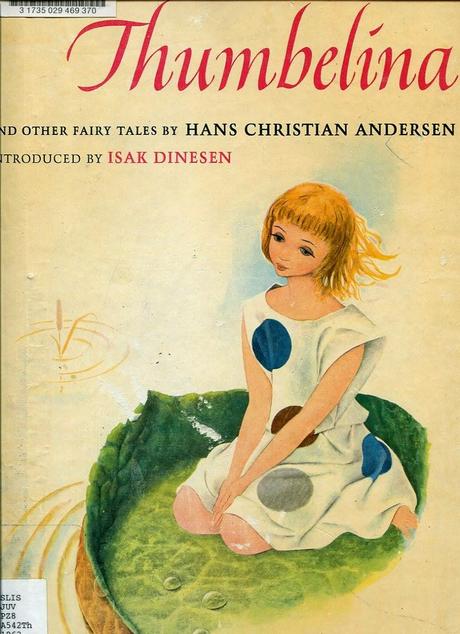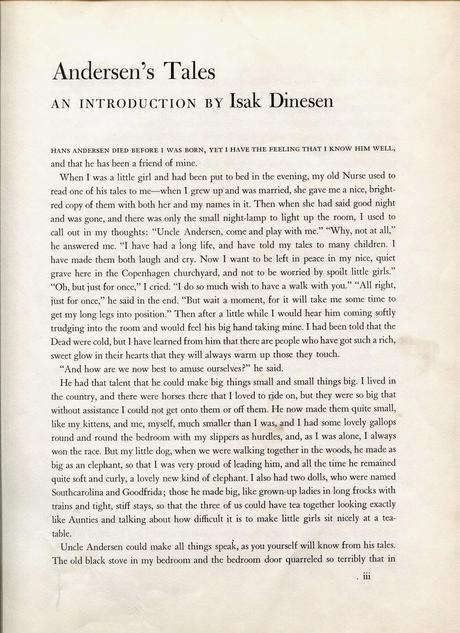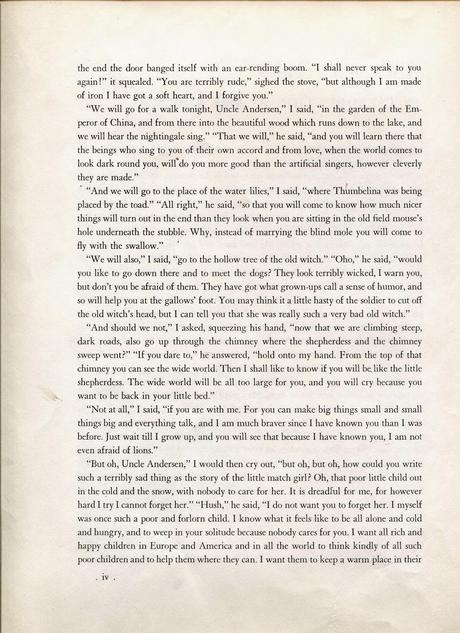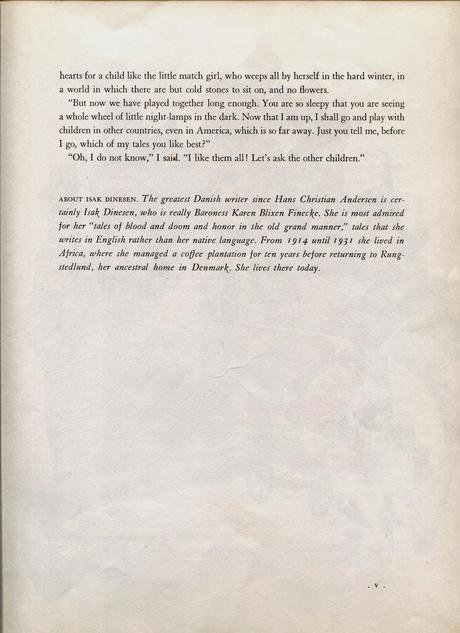 I HAVE SAVED THE BEST INTRODUCTION in Michael Di Capua's 1962 series of classic fairy stories for last. Isak Dinesen may now be best remembered for her memoir Out of Africa from the movie starring Robert Redford and Meryl Streep, but in her lifetime she was known for her Gothic stories. When asked to introduce a collection of her countryman Hans Christian Andersen's stories, rather than write a simple introduction, Dinesen supplied a ghost story, conjuring Andersen's spirit into her childhood room. "I had been told that the Dead were cold, but I have learned from him that there are people who have got such a rich, sweet glow in their hearts that they will always warm up those they touch." Taking Andersen's ghost by the hand, Dinessen follows him as he magics her room and her playthings like the numerous toys brought to life in his stories. Then, pulling him after her, she drags him through his own fictions, excitedly pointing everything out as though he had never seen them before, and he follows with an amused, knowing smile.
I HAVE SAVED THE BEST INTRODUCTION in Michael Di Capua's 1962 series of classic fairy stories for last. Isak Dinesen may now be best remembered for her memoir Out of Africa from the movie starring Robert Redford and Meryl Streep, but in her lifetime she was known for her Gothic stories. When asked to introduce a collection of her countryman Hans Christian Andersen's stories, rather than write a simple introduction, Dinesen supplied a ghost story, conjuring Andersen's spirit into her childhood room. "I had been told that the Dead were cold, but I have learned from him that there are people who have got such a rich, sweet glow in their hearts that they will always warm up those they touch." Taking Andersen's ghost by the hand, Dinessen follows him as he magics her room and her playthings like the numerous toys brought to life in his stories. Then, pulling him after her, she drags him through his own fictions, excitedly pointing everything out as though he had never seen them before, and he follows with an amused, knowing smile."You can make big things small," the young girl says, "and small things big and everything talk, and I am much braver since I have known you than I was before. Just wait till I grow up, and you will see that because I have known you, I am not even afraid of lions."
 Eventually, Andersen is able to convince his passionate fan to return to bed, promising to "go and play with children in other countries," but he asks one last parting question, "which of my tales [do] you like best?"
Eventually, Andersen is able to convince his passionate fan to return to bed, promising to "go and play with children in other countries," but he asks one last parting question, "which of my tales [do] you like best?"The child Dinesen, or perhaps it is the adult writer Dinesen, says "I like them all! Let's ask the other children."
The stories included in this volume for consideration are "The Tinderbox," "The Nightingale," "The Shepherdess and the Chimney Sweep," "The Little Match Girl," and "Thumbelina." If a child never read any other Andersen collection, this is a near perfect selection of the essentials. As with the rest of the Macmillan series of fairy tales, the illustrations were provided by Sandro Nardini and Ugo Fontana.
At the end of her introduction, Dinesen's biography is given:
The greatest Danish writer since Hans Christian Andersen is certainly Isak Dinesen, who is really Baroness Karen Blixen Finecke. She is most admired for her "tales of blood and doom and honor in the old grand manner," tales that she writes in English rather than her native language. From 1914 until 1931 she lived in Africa, where she managed a coffee plantation for ten years before returning to Rungstedlund, her ancestral home in Denmark. She lives there today.To read the complete introduction--or short story, I would venture to call it--click on the images below.



For the previous entries in this series, see:
Elizabeth Bowen on John Ruskin
Jean Stafford on the Arabian Nights
John Updike on Oscar Wilde
Randall Jarrell on the Brothers Grimm and Ludwig Bechstein

All images are copyrighted © and owned by their respective holders.

